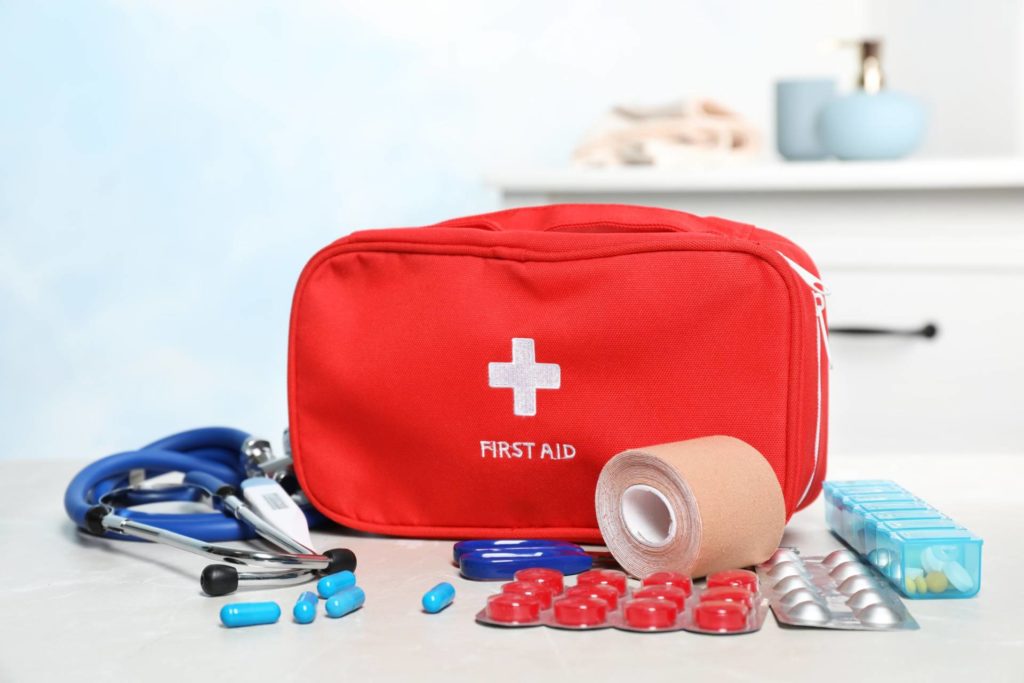What Should I Put In A Travel First-Aid Kit?

It’s a good idea to have a first-aid kit in every family vehicle so that you are prepared in the event of a medical emergency. While the team at Gold Cross would be more than happy to assist in the event of a major medical emergency, it’s always good to have a first-aid kit nearby so that you can address a medical issue when you’re on the go.
But what types of items should you include in your travel first-aid kit? Today, we share some essential items that should be in every travel first-aid kit.
Building A First-Aid Kit For Your Car
Your first-aid supplies at home may be a little more comprehensive, but your travel kit will want to be more compact since it will be taking up space in the trunk or under a seat. Because of this, you’ll want to fill your kit with only the most essential supplies. Here’s a look at 20 items that we feel are very helpful in a travel first-aid kit.
Antibacterial wipes – Helpful for cleaning tools and hands before addressing a wound.
Antibiotic ointment – Apply to a wound before covering with a bandage to help prevent an infection.
Antihistamines – Antihistamines can help to quell seasonal allergies.
Aloe Vera gel – Aloe Vera can help calm skin discomfort from sunburn or skin irritants.
Band-Aids – No first-aid kit is complete without band-aids, big and small.
Calamine lotion – Calamine lotion can help calm skin rashes or similar conditions caused by poison ivy or other irritants.
Cold pack – Instant cold packs can help to prevent swelling after bumps and bruises.
Cough and cold medicine – If your child comes down with a cold or a cough when you’re on the go, you can get them the meds they need right away without making a pit-stop at the pharmacy.
Emergency Contacts – We always assume that we’ll have access to our contacts in our cell phone, but it’s helpful to have a written list of emergency contact numbers in the event that you don’t have your phone or you need to call from an unexpected location.
Gauze – When and-aids aren’t enough, gauze can help to stop the bleeding.
Hand sanitizer – Similar to antibacterial wipes, hand sanitizer can help keep hands clean before you tend to an injury.
Motion sickness tablets – Even if you don’t typically get motion sick, it’s helpful to keep a couple tablets in your first-aid kit for yourself and any passengers.
Pain medications – Over-the-counter pain medications and anti-inflammatory medications can help provide mild pain relief from everyday aches and pains.
Rubber gloves – Rubber gloves can help reduce the risk of infection when addressing wounds.
Scissors – A scissors is a helpful tool that can help snip gauze rolls, open bandages or cut through other objects as needed during an emergency.
Sunscreen – It’s always helpful to have sunscreen on-hand in the event that you end up outdoors for an extended period of time.
Tape – Medical tape or self-adhesive wraps can help you secure gauze in a location or wrap your ankle after a sprain.
Thermometer – Many people find it helpful to have a thermometer in their first-aid kit to help check for the presence of a fever.
Tweezers – Tweezers can be the perfect tool for removing a splinter, a tick or a painful bee stinger, so pack one in your travel first-aid kit.
Whistle – Finally, it’s helpful to have a whistle inside your first-aid kit in case you need to alert others to your location in a hurry.
We’re confident that these items will help you overcome minor medical emergencies, but for more serious issues, call a medical professional or the team at Gold Cross Ambulances Services.
Leave a Reply